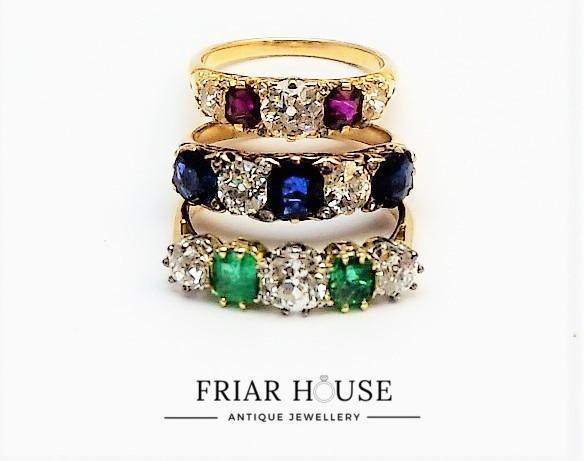Check the settings regularly for wear and damage – this will allow you to spot any signs of wear to the claws and settings that may compromise the stone, and cause it to fall out. A jeweller will be happy to check the settings for you in your jewellery with a magnifying loupe. It is important to treat antique jewellery gently and even though the pieces are intended to be worn, many items were not designed with active modern lifestyles in mind.

Photograph your jewellery and keep the receipts – this will help you with any potential insurance claim should the worst happen and you lose an item. Receipts provide proof of purchase, and generally, a description of the item to allow a suitable replacement to be found. The seller should be able to help to source a replacement.

Get regular valuations for insurance purposes – for valuable items it is always worth getting an insurance valuation from the seller at the point of buying the item. The valuation should include a full description of the item and photographs. The valuation for retail replacement will differ from auction values. Items can increase or decrease over time and your Insurer may ask you to get an up to date valuation every five years or so.
Keep your jewellery in separate boxes or pouches – Diamonds can scratch practically every known surface and should be kept away from other materials. Jewellery is made from metal, gemstones and other materials that can often have soft or damageable surfaces.
Clean your jewellery regularly – An accumulation of dirt and tarnish can spoil a piece of jewellery. Chemicals found in cosmetics and body oil can sometimes discolour materials if it is left on for any length of time. Care should be taken with perfumes and hairsprays with jewellery being the last item to be put on. Don’t over clean delicate pieces of jewellery – for example fragile surfaces such as enamel and plating.
Repairs to antique jewellery – always get a receipt for your jewellery when you leave a piece with a jewellers for repair. Choose a reputable jewellers and if possible take the item back to the original seller who will use a workshop experienced in antique jewellery repair.






